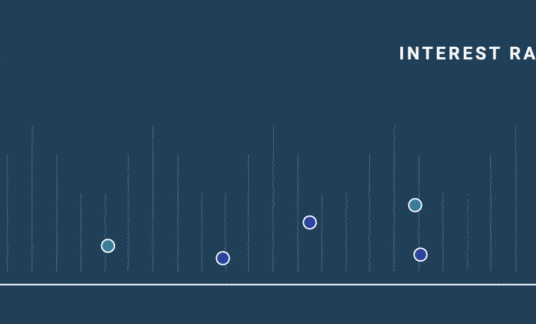As a small business owner, you might wonder, “Is ecommerce worth it?” The fact is billions of people across the globe are shopping online.
As a result, staying up to date with the latest ecommerce trends can help keep your business moving in the right direction.
With that in mind, we’ve curated the ultimate list of ecommerce statistics, from mobile ecommerce stats to ecommerce shipping statistics to ecommerce growth projections and more. See how consumers spend around the world with the click of a mouse or tap on a phone or tablet.
Global Ecommerce Statistics
Get a glimpse of the promising future of ecommerce around the world through the following online shopping statistics.
- Global retail ecommerce spending totaled approximately $5.2 trillion in 2021, a figure projected to rise 56% over the next few years. Specifically, by 2026, ecommerce sales are forecasted to reach $8.1 trillion. – Statista
- In 2022, global ecommerce accounts for approximately 22% of total retail sales compared to 15% in 2019. – Morgan Stanley
- When it comes to profits, revenue from ecommerce sales is expected to hit $3.3 trillion by 2024, with the fashion sector reaping the most profits. This is followed by toys, hobbies or do-it-yourself tasks; electronics or media; food or personal care; and furniture or appliances, respectively. – Statista
- China is the biggest ecommerce market in the world. It has maintained the top spot and is estimated to grow by nearly 30%. Additionally, 36% of Chinese shoppers belong to the high-income demographic group. – Statista
- After China, which makes up 46.3% of global retail ecommerce sales, the United States, United Kingdom, Japan and South Korea make up the largest shares of ecommerce sales. – Shopify
- In 2022, Latin American countries, including Mexico, Colombia, Chile, Argentina, Brazil and Peru, saw $104 billion in ecommerce sales, compared to $85 billion the year prior. – Shopify
- In 2022, India’s ecommerce market experienced 25.5% growth, making it one of the fastest-growing countries for online sales. – Shopify
Consumer Ecommerce Statistics
Find out what consumers expect from online retailers and see how their shopping habits are evolving with these ecommerce facts and figures.
- Factors that encourage consumers to make an online purchase include:
- Free delivery (61%)
- Product availability (57%)
- Better price (53%)
- Fast delivery (49%)
- Convenient delivery (47%)
- According to a June 2022 survey, however, rising prices for groceries (56%), out-of-stock items (43%) and longer-than-anticipated delivery times (42%) are obstacles affecting online shoppers the most these days.
In response to these issues, 40% of shoppers surveyed use more comparison sites to research product availability. – PwC
- Top things that shoppers would change about online shopping:
- More free returns (28%)
- Easier returns (25%)
- Faster replacement of out-of-stock items (24%)
- Faster delivery (24%)
- Clearer posting of out-of-stock items (23%)
- No desired changes (21%)
- Top reasons for shopping online over physical stores include:
- Crowd avoidance (65%)
- Comfort of shopping from home (64%)
- Free shipping or delivery options (60%)
- 24-hour availability (58%)
- Ease of price comparisons (53%)
– Deloitte
- Top 10 attributes for choosing a retail brand include:
- Great deals (61%)
- High-quality, trustworthy products and brands (49%)
- Variety of products or styles (46%)
- Ease of checkout process (38%)
- Well-organized, easy-to-navigate mobile app or website (36%)
- Covid safety precautions (35%)
- Ease of product returns (32%)
- Product ratings and reviews(31%)
- Availability of coupons and promotions (30%)
- Well-kept or clutter-free store (26%)
– Deloitte

- The average spending amount consumers are willing to allocate for online holiday shopping is about $892, while consumers are only willing to spend roughly $390 in physical stores. – Deloitte
- The peak times for online sales fall between 3 p.m. and 9 p.m. – Avionos
- Some 21% of shoppers prefer more products to be digital and instantly downloadable. – Wunderman Thompson Commerce
- In a recent 6-month period, more than 80% of shoppers surveyed reported using at least 3 shopping channels. Interestingly, virtual reality was used by 1 in 3 of the respondents, with many reportedly using the technology to purchase retail goods and luxury items. – PwC
Shipping Statistics
If you don’t have an efficient shipping process, you’ll disappoint a lot of customers. Here are some statistics about online shipping to consider for your ecommerce store.
- The following are the preferred delivery options of consumers:
- Standard delivery (73%)
- Same-day or next-day delivery by the retailer (43%)
- Buy online or pick up in-store (35%)
- Curbside pickup (27%)
- Batching or combining orders of shipping (20%)
- Same-day or next-day delivery through a delivery service (15%)
- Buy online or pick up in a locker (10%)
- Personal shopping assistant services (8%)
– Deloitte
- In terms of product return statistics, 45% of consumers prefer to buy online, return in-store and 70% of consumers prefer free return shipping – Deloitte
- Some 38% of shoppers believe getting the product on time is more important than getting a product from their preferred brand. – Wunderman Thompson Commerce
- More than 7 in 10 Millennial and Gen Z shoppers believe delivery time is more important in determining where to shop compared with 66% of Gen Xers and 57% of Baby Boomers. – Facebook IQ
- A next-day delivery option increases the likelihood of making an online purchase for 32% of Gen Z shoppers. – Facebook IQ
- About 85% of shoppers prefer free shipping rather than fast shipping – Deloitte
- Roughly 41% of consumers want multiple drop-off locations for convenient product returns. – Deloitte
- Of shoppers who opt for fast shipping, 67% expect the product to be delivered within 2 days. Meanwhile, 68% of shoppers who opt for free shipping are willing to wait 3-7 days. – Deloitte
- About two-thirds of consumers (64%) own a voice-enabled device, such as Amazon Alexa, Google Home or a smartphone. Of this number, around one-third of consumers use voice assistants to find products, while 28% use them to shop for products. – Catalyst Digital and Kantar
Cart Abandonment Statistics
Many shoppers are prone to abandon their carts, which means lost sales for your business. Take a look at these cart abandonment statistics to reduce the cart abandonment rate in your ecommerce store.
- The average online shopping cart abandonment rate is 69.99%. – Baymard Institute
- The most common reasons for abandoned shopping carts are as follows:
- Unexpected costs, such as fees, shipping and taxes (55%)
- No guest checkout option (34%)
- Complicated checkout process (26%)
- Inability to view order total (21%)
- The finance industry has the highest cart abandonment rate (83.6%), followed by nonprofit (83.1%), travel (81.7%), retail (72.8%), fashion (68.3%) and gaming (64.2%). – OptinMonster
- Improved design and checkout flow could lead to the recovery of $260 billion in lost sales due to abandoned carts. – Baymard Institute
- Ecommerce sites can get a 35.26% increase in conversion rate by improving their checkout design. – Baymard Institute
- The average U.S. checkout flow has around 23.48 form elements, but usability testing reveals that the ideal checkout flow can be as short as 12-14 elements. – Baymard Institute

Mobile Ecommerce Statistics
When it comes to mobile shopping statistics , there’s nowhere to go but up. Let’s take a look at key ecommerce mobile stats driving online shopping patterns in the U.S. and around the world.
- By 2026, purchases on mobile apps are estimated to surpass $50 billion. – Merchant Savvy U.K.
- Online shopping traffic statistics reveal 58.3% of users buy products through mobile, largely influenced by Asian buyers, who make up 70% of mobile spending. – Merchant Savvy U.K.
- In 2022, digital or mobile wallet payments were used by 49% of ecommerce shoppers, a figure predicted to rise to 53% by 2025. – Merchant Savvy U.K.
- 4. Top reasons people prefer to shop using mobile apps include the following:
- Convenience (62%)
- Easy user interface (44%)
- Better prices or promotions on apps compared to other channels (41%)
- Speed (37%)
- Easy access to loyalty account (30%)
- Closing and reopening app saves shopping cart details (29%)
- Easy communication/customer service support (27%)
- Mobile apps save membership, payment and shipping information (25%)
- Easy issue resolution for returns, refunds and exchanges (21%)
- Intuitive category management (16%)
The biggest reason consumers don’t like using mobile apps for shopping is they can’t interact with the product in person. Specifically, 54% agree, while 38% say the screen is too small and 35% say mobile apps don’t provide enough product information. –Heady
Social Media Commerce Statistics
More people are using social media to discover new brands or make purchases. Here’s how shoppers are using social media today.
- There are 4.62 billion social media users worldwide, or 58.4% of the world’s population, a figure that has grown by 10% from 2021-2022. – We Are Social
- Users spend an average of 2 hours and 27 minutes a day on social media channels, with the greatest amount of time spent on the following apps:
- YouTube (23.7 hours per month)
- Facebook (19.6 hours per month)
- WhatsApp (18.6 hours per month)
- Instagram (11.2 hours per month)
- TikTok (19.6 hours per month)
- We Are Social
3. Some 59% of online shoppers are aware of social commerce. Of this number, 61% are likely to buy from social sites in the future. – Catalyst Digital and Kantar
- Globally, social media platforms were expected to bring in $992 billion in 2022 alone and are projected to reach $2.9 trillion by 2026. – Statista
- U.S. social commerce sales were projected to be $51.8 billion in 2022 and are estimated to reach $145.2 billion by 2028. – Statista
- Nearly half of online shoppers (49%) agree that they’d consider purchasing products from live streams of brands, celebrities or influencers they follow – Facebook IQ
- Ads on Facebook Marketplace can reach 562.1 million users each month, while Instagram Shop’s ads can reach 187.6 million. – We Are Social
Customer Service Statistics
Online shoppers want high-quality and efficient support. That’s why you should focus on improving the performance of your customer service channels.
Check out these ecommerce statistics about customer service to get started:
- About 93% of consumers are more likely to make a repeat purchase from a business with excellent customer service. – HubSpot Research
- When it comes to support channels, phone support has the highest satisfaction rate (91%), followed by live chat (85%), help center (83%), email (82%), Twitter (81%), and Facebook (74%). – Zendesk
- Roughly 95% of shoppers prioritize high-quality support rather than speed. – Kayako
- About 52% of consumers are likely to make another purchase at a company that offers live chat support. – Kayako
- Some 29% of consumers are frustrated by scripted and impersonal responses to customer support. – Kayako
What Do These Ecommerce Statistics Mean for Your Business?
Now that you’ve learned some of the latest ecommerce insights, figure out how you can leverage the data to grow your business this year. Check out our blog for effective strategies to build your brand. Also, explore our website to see financing options that can help you take your company to the next level.










